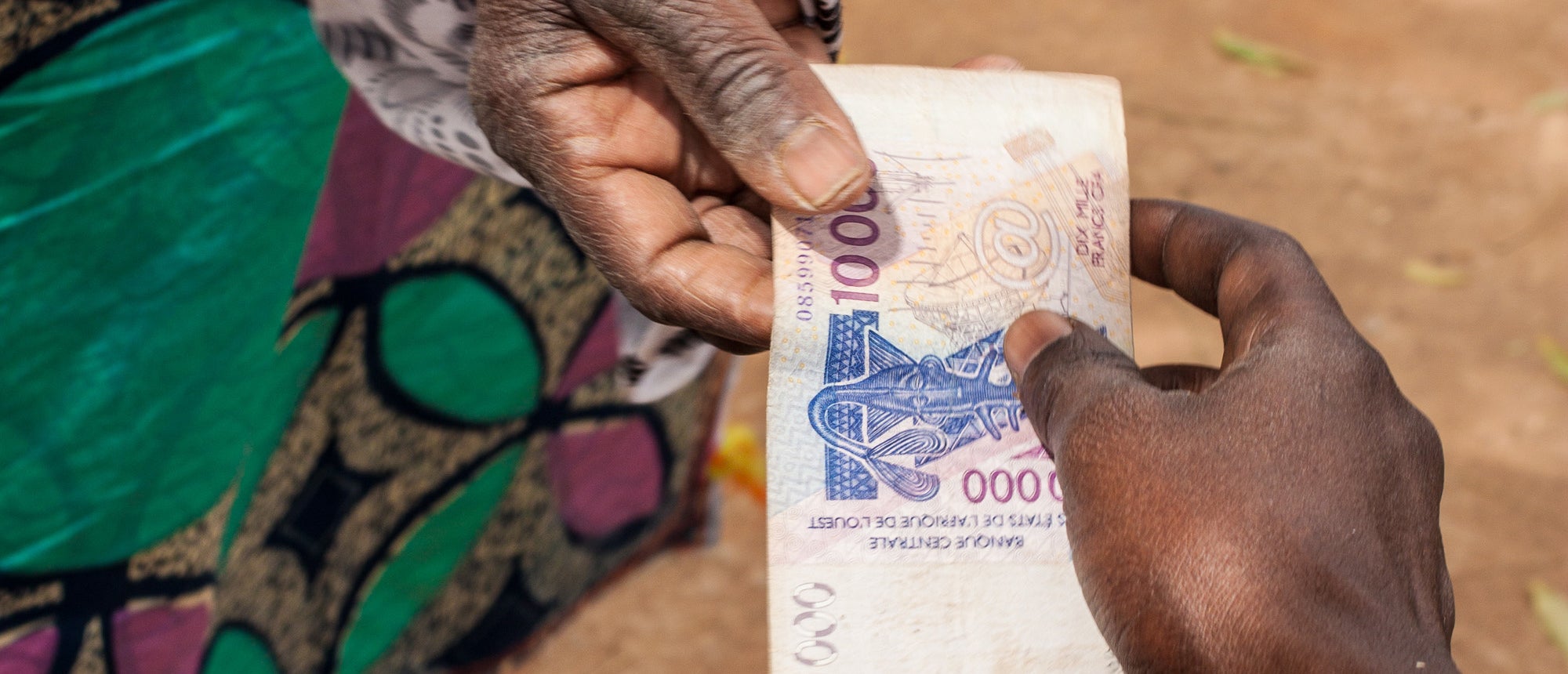 Digital agriculture can make finance more accessible to farmers.
Digital agriculture can make finance more accessible to farmers.
“Neither a borrower nor a lender be.” —William Shakespeare
Clearly, Shakespeare never farmed. Credit is critical to farming because it sparks agricultural transformation, the process of investment and technological change leading to higher productivity. Traditional development theory tells us that land rights unlock the credit needed for agricultural transformation. But in practice, access to finance is out of reach for many farmers so a smallholder financing gap of USD 150 billion remains.
Rural lending is already risky and expensive for many reasons, like long distances to banks and the variability inherent in agricultural production. Since smallholders operate in cash markets and don’t have formal credit histories, it’s difficult for lenders to determine creditworthiness, so they demand land as collateral in case of default. However, this isn’t great for farmers without formal land rights, or for smallholders unwilling to borrow against their most valuable asset. Using land as collateral also isn’t great for banks, which often have to unload land acquired during defaults below cost. Land rights are important — they encourage long-term investment, contribute to the rule of law, help build climate resilience, and empower women. However, to draw an analogy between what smallholders face and the plot of ‘Much Ado About Nothing’, land rights might just be the Claudio that left smallholders at the altar.
The good news is that the Digital Agricultural Revolution and the FinTech Revolution are disrupting this traditional, collateral-based system. Digital technology can reduce the transaction costs of applying for loans as well as the verification and tracking costs associated with gathering information about borrowers. Lenders can obtain real-time, low-cost information about their borrowers via digital fingerprints. They can use big data algorithms to assess farmer cash flow and ability to repay a loan. Digital solutions lessen the need for banks to demand land as collateral for small loans.
How does this work in practice? First, digital technology reduces the costs of verifying farmers’ ability to repay a loan. The Kenyan company M-Shwari uses customers’ phone and mobile money records to assess creditworthiness. Organizations like FarmDrive and Apollo Agriculture incorporate satellite imagery, weather forecasts, and remote sensor data when calculating farmers’ loan eligibility. Drone imagery can confirm a farmer’s physical assets, whether it’s land, cars, or tin roofs. In all instances, low-cost digital verification reduces lenders’ uncertainty about a farmer’s ability to repay loans, decreasing the need for collateral.
Second, digital technology reduces ongoing tracking costs. In Senegal, a digitalized, supply-chain-tracking system allows farmers to collateralize their rice to obtain the credit necessary for planting. Lenders accept rice as collateral because real-time, digital tracking assures them the product wasn’t lost or damaged in the post-harvest process. Mobile communication, online platforms, blockchain, and other digital technologies facilitate supply chain traceability.
Lending, both in and out of agriculture, is shifting away from collateralized land required by the “formal property process.” According to the World Economic Forum Global Competitiveness Index’s survey, accessing loans without collateral has become 43 percent easier since 2010.1 In recent years, microfinance has made mainstream the use of “social collateral” in group lending schemes. Leveraging big data analysis and reduced costs of collecting buyer information, the Digital Agricultural Revolution can build on past success.
- 1.5 – 2.1
- 2.1 – 2.7
- 2.7 – 3.3
- 3.3 – 3.9
- 3.9 – 4.5
- 4.5 – 5.1
- 5.1 – 5.7
- No Data
Clearly, digital technology has the potential to further expand farmers’ access to credit. So what is the public sector’s role? Should governments create opt-in/opt-out open databases with the agronomic, land use, and digital transaction history data required to develop alternative credit scores? Maybe policymakers should create a digital asset registry which includes non-land assets like cars, tin roofs, etc. Centralized information on farmers’ resources could further cut transactions costs. It’s important to note, though, that, questions about data privacy and security remain unresolved. The public sector must provide more guidance to lenders, data service providers, and farmers.
In summary, the Digital Agricultural Revolution will reduce tracking and verification costs, allowing better-informed lenders to move away from land as collateral. Ultimately, this could expand credit access to smallholders and improve their welfare. In Shakespeare’s words, all that glitters is not gold — and when it comes to agricultural credit, land rights have failed to live up to expectations. Digital technology could change the story—now and in the future.
We hope to crowd-in some of the world’s best minds to participate in a global conversation on food and technology through the “What’s cooking? Rethinking farm and food policy in the digital age” blog series. We invite people with diverse backgrounds and perspectives to join us and share their comments.

1 Data includes 151 countries from 2010 to 2017



Join the Conversation